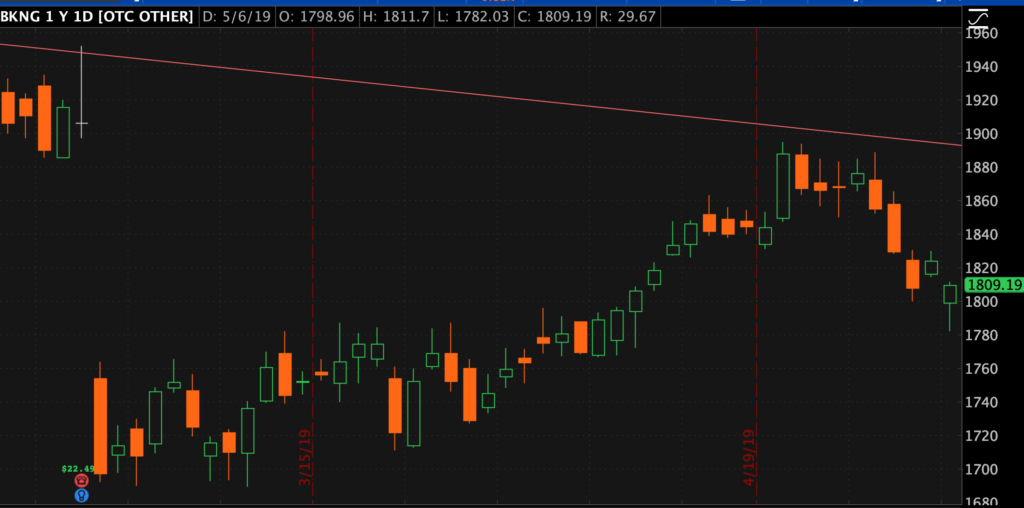
For a long time, traders using technical analysis have observed various kinds of gaps in price charts. One of the key findings is that gaps -- price ranges of no trading --- occur when prices move suddenly in response to some major news on a stock, such as an analyst downgrade, unexpected good news, or sudden increase in demand for a stock. Ignoring small gaps, we consider a gap worth noticing if it is at least 5% of the stock price.
We know why gaps occur, but what do they say about a stock, and how do we as options traders take advantage of them?
Strategy 1. Sell-the-gap trade. When stock prices gap up or down about 10% on an earnings announcement, they are likely to set a new price range some distance away. This works for most growth stocks, but not other types, so check the history over the last 2 years.
Consider AMZN. When it gaps up, it usually stays up and keeps going up. This performance has produced perhaps a spectacular growth story. Smart traders have been selling Puts on AMZN whenever it gaps up. This strategy has been working about 85% of the time. Here are there steps.
- Wait until the announcement is out. Next day sell Puts at the jumping off place.
- Place closing orders on your short Puts at about .10 cents per month.
- Do not try to sell calls on any rapidly rising stock
Strategy 2. Fill-the-gap trade. Consider the BKNG chart above here. The stock gapped down about 10% after announcing earnings, but then slowly rose over 50 trading days until it reached pre-earnings level. This works for most growth stocks, but not other types, so check the history over the last 2 years. Options traders can trade this pattern by
- Selling at-the-money Calls as soon as the stock gaps down.
- Close the Calls before the stock retraces its fall.
- Sell puts below the new price range, just as the stock turns up.
- Close the puts before the stock reaches the top of the old gap, as it is likely to turn down again.
In the case of BKNG, the stock has been declining for many months, as suggested by the red line above the prices. Notice that the stock turned down again as it approached that line. There were two reasons to expect BKNG to reverse direction and fall back: the gap had been filled, and the stock had reached the top of the "channel" (red line). We rate this strategy as 70-80% likely to produce profits.
Will you be able to predict and trade the next "sell-the-gap" or "fill-the-gap" trade? Look for earnings gaps on popular stocks such as AMZN, AAPL, BA, BKNG, GOOG, GOOGL, NFLX, TSLA.
- - - - - - - - - - - - - - - - - - - - -
This post was added for the benefit of students in our Intermediate Options Trading class. For more trading lessons, join our Meetup group of over 600 traders at http://meetup.com/honolulu-options-traders